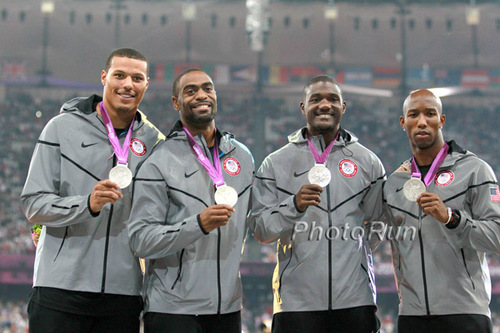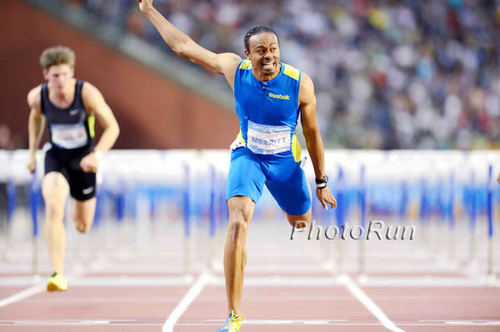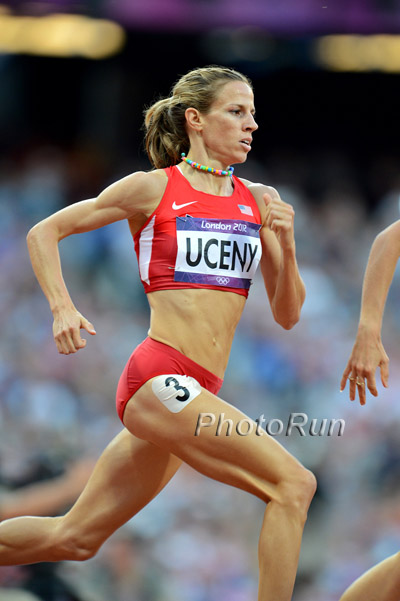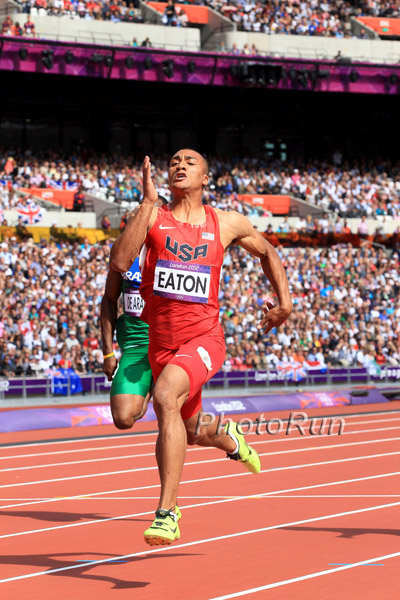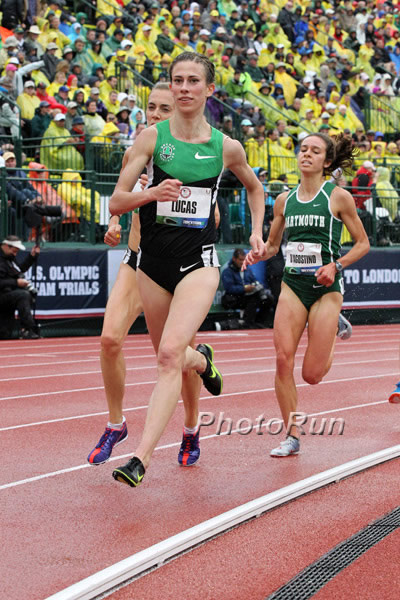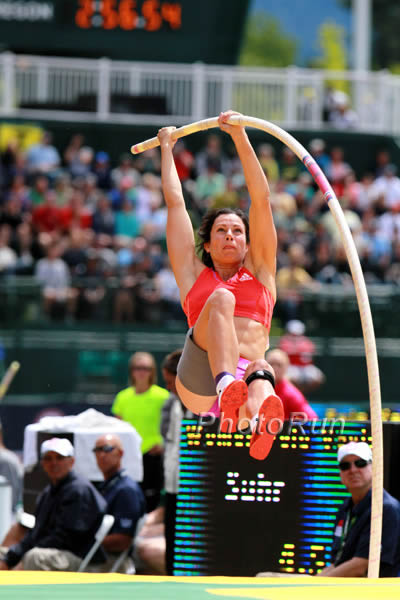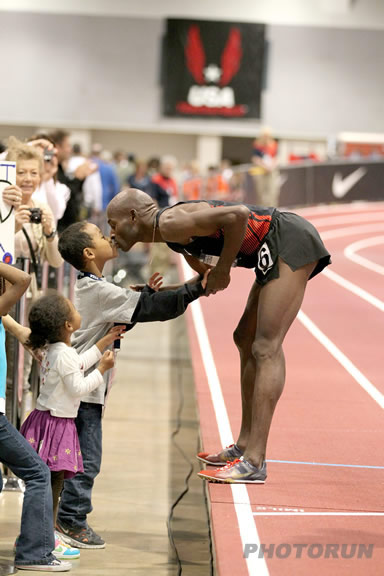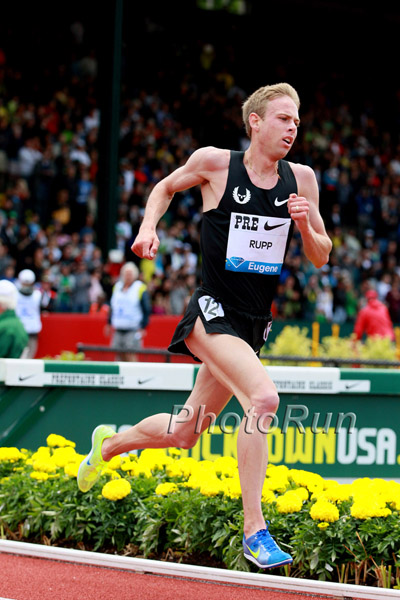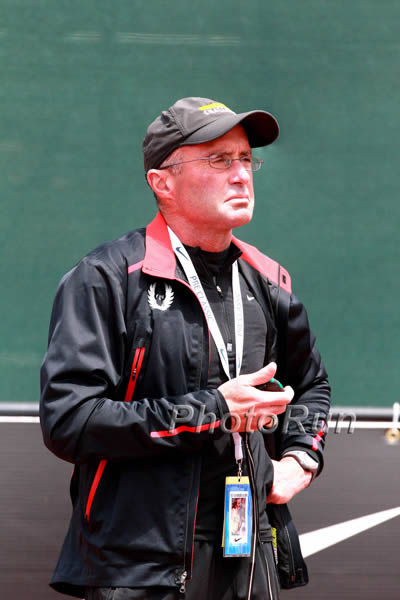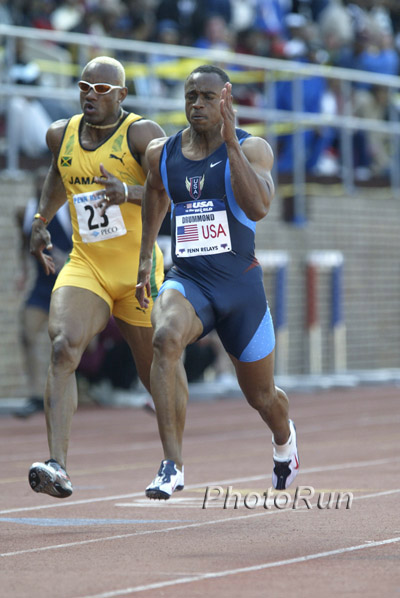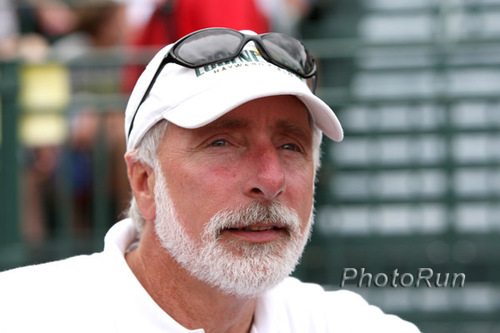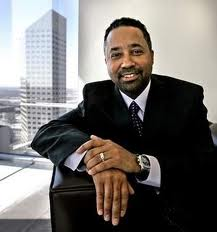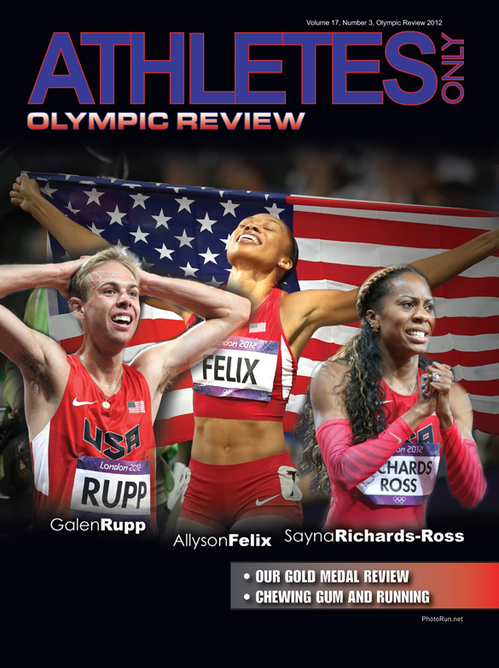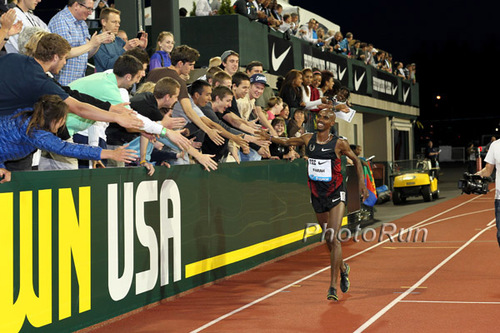Dave Hunter, one of our most popular columnists is back for 2013. Here is his first column for 2013. Dave has focused on all of the promise he sees for American Track & Field in 2013! We think you will agree he has provided much food for thought!
2013 Wishes For American Track & Field

The dawning of a new year always seems to be an important pivot point. It is a time for reflection, to look back on the events of the year just concluded. But it is also an opportunity to gaze at the year ahead and to plan and dream about the coming events about to unfurl. As we march into 2013, here are a few New Year’s wishes for those surrounding American track & field.
Allyson Felix, London 2012, 200 meters,
photo by PhotoRun.net
For Allyson Felix: An encore. Felix had a truly magical year in 2012: three Olympic gold medals, which included a leg on the USA’s world record-setting 4×100 relay team; and a 21.69 furlong at the Olympic Trials – considered by many to be the pinnacle female performance of the year. Through no fault of her own, she got caught up in the provocative swirl that surrounded her third place tie with Jeneba Tarmoh in the OT 100. She handled the attendant attention with her customary poise and circumspection. How does she top – or even match – last year? Clearly approaching the zenith of her impressive career, Felix might consider what she has never shied away from in the past: to challenge herself. The time will never be better for her to explore her considerable – and not yet fully exploited – potential in the 400. A targeted 200/400 double in Moscow would be the type of ambitious goal that can inspire a great athlete like Felix. And it would be one hell of an encore.
London 2012, US 4 x 100m relay, (Bailey, Gatlin, Gay, Kimmons), silver medal,
photo by PhotoRun.net
For U.S. Men Sprinters: Inspired Courage. It would understandable if the American men sprint contingent found itself struggling with a nagging sense of discouragement in the wake of Usain Bolt’s other-worldly big-stage performances over the past four years. It is a phenomenon not without precedent: an entire generation of long-jumpers was, to some degree, similarly plagued by a sense of hopelessness when Bob Beamon leaped 29′ 2½” to extend the then-existing world record by nearly two feet. American sprinters should take stock and take heart in their own potential. There are reasons for guarded optimism. Only a year ago, the sprint relay corps was widely-discredited as lacking focus and cohesion. Yet last year’s Drummond-led forces performed admirably, beaten only by Jamaica’s world record performance. Justin Gatlin – after an extended period of enforced idleness – found a way to run faster in London than he did in his gold medal performance in the 2004 Olympic Games. Ryan Bailey is the most visible face of a young group of American sprinters poised to take center stage. Bolt’s double loss to Yohan Blake in the Jamaican Trials demonstrates that Bolt is mortal after all. Here’s hoping that U.S. sprinters can find inspiration and courage in all of that.
Aries Merritt, 2012 Brussels DL, 12.80 WR for 110m hurdles,
photo by PhotoRun.net
For Aries Merritt: Vision. The newly-minted world record holder in the 110 hurdles is just the type of exuberant and enthusiastic marquee performer American track & field needs. His visionary talks of 200 meter hurdle races and unique hurdle relays are good for the sport. May his upbeat, outside-the-box thinking continue.
Morgan Uceny, London 2012, 1,500m final,
photo by PhotoRun.net
For Morgan Uceny: A Fair Chance. Uceny’s unbelievable tripping misfortune in the 1500 finals at both the 2011 World Championship and the 2012 Olympic Games disproves the maxim that lightning never strikes twice. European-style jostling is to be expected in competitive championship finals, but the sport needs to ensure that the trend toward roller derby-type scuffles is abated. There is a darker issue that is difficult to resolve: When a disabling foul occurs in a final, disqualification of the offender is no meaningful remedy for the athlete left sprawling on the track, denied the opportunity of a lifetime.
Ashton Eaton, London 2012,
photo by PhotoRun.net
For Ashton Eaton: Expanded Opportunities To Showcase His Talents. All fans of track & field relish the opportunity to witness performances by the incredibly-gifted and finely-honed decathletes. Yet even the most resilient multi athletes can compete in full decathlons only a couple of times a year. But for Eaton – who, like all Olympic decathlon gold medalists, wears the crown as The World’s Greatest Athlete – there may be another pathway to perform. Eaton – who PR’d in 8 of the 10 decathlon events last year – is highly competitive in several individual events – especially the long jump where he was ranked #3 in the country. Here’s hoping he can fit in a few more individual event appearances in his 2013 build-up to Moscow.
Julia Lucas, 2012 U.S. Olympic Trials, 5,000 meters,
photo by PhotoRun.net
For Julia Lucas: Redemption. Julia Lucas was one of the most heart-wrenching stories of 2012. Trapped in the perfect storm of her own creation, Lucas unwittingly sealed her own doom as her long three-lap drive to the finish in the 5000 OT final not only left her spent and unable to respond to the desperate finishing sprint of Kim Conley, but also elevated the race pace just enough to allow Conley to achieve the “A” standard time she lacked – by mere tenths. Following the pathway to redemption followed by Dathan Ritzenhein and Amy Hastings, Lucas needs get back on that pony and prepare herself for this year’s 5000 battles. As Ritzenhein and Hastings would tell her, all track & field fans will be cheering for her.
Jenn Suhr, 2012 U.S. Olympic Trials, pole vault,
photo by PhotoRun.net
For Jen Suhr: Good Health. Jen Suhr somehow found a way to navigate through a season-long mine field of nagging injuries to capture pole vault gold in London – besting Russian vault legend Yelena Isinbaeva. Suhr will need to be in the pink of health in August to help her overcome Isi and her home court advantage when this duo does battle in Moscow.
Bernard Lagat, 2012 USA Indoor,
photo by PhotoRun.net
For Bernard Lagat: Wisdom. The effervescent Lagat has done it all: Olympic medals; multiple world championships; Millrose icon; the list goes on and on. Now in the gloaming of an exceptional middle-distance career, Lagat is at an important crossroads. He will be benefitted by wisdom in several critical areas: the wisdom to develop a racing approach that fits this mature stage of his career; the wisdom to know when his time as a world class athlete is drawing to a conclusion; and the wisdom to find a post-career niche in the sport that needs his knowledge and beloved personality.
Galen Rupp, 2012 Nike Pre, 5,000 meters,
photo by PhotoRun.net
For Galen Rupp: Growing Confidence And Unbridled Expectations. Rupp’s patience has been rewarded. A believer in and an adherent to the carefully-crafted roadmap of distance progression assembled for him by Alberto Salazar, Rupp should now, more than ever, clearly see that he can compete with anyone. Anyone in the world. Period. Toughened by a steady diet of under-distance racing as prescribed by Salazar, Rupp has now developed the type of finishing kick which is absolutely essential for medal-winning performances on the world’s big stages. A healthy, stronger, and more confident Rupp could provide some stunning performances in the coming year.
Alberto Salazar, 2012 Nike Pre Classic,
photo by PhotoRun.net
Jon Drummond, Penn Relays, 2004,
photo by PhotoRun.net
For John Drummond And Alberto Salazar: Well Deserved Respect. The doubters began to whisper when Drummond undertook the task of rehabilitating the USA’s sprint relay squad – a troupe that was disorganized and unfocused. Similar fringe skepticism surrounded Salazar’s initial tutelage of Rupp. It was a skepticism that grew when Rupp’s early progression proved to be measured, but not unduly remarkable. Last year’s Olympic medals should change all of that. The U.S.A.’s silver medal performance in the 4×100 and the medal winning perfomances of Rupp and Mo Farah in the Olympic distance races should accord to both men the respect they have richly earned.
Vin Lananna, 2008 U.S. Olympic Trials, photo by PhotoRun.net
For Vin Lananna: Continued Creative Contributions. Lananna has been a creative contributor to the sport of track & field for many decades. Over that period, he has re-invented himself several times. Initially respected as a top flight coach with an eye for talent and the skill set to develop it, Lananna moved on to develop a larger vision of the sport – reinvigorating track & field programs at Stanford and then at Oregon. Far from done, he went on to create the current template for a successful and joyful Olympic Trials – a community-wide effort which creates an undistracted venue for superior athletic performance and a reunion-like atmosphere of celebration for those who love the sport. Track & field needs the visionary creativity of Lananna and those like him. Here’s hoping Vin is inclined to find yet additional ways to provide his special brand of counsel to the track & field community.
Max Siegel, CEO of USA Track & Field,
photo courtesy of USA Track & Field
For USATF: Coordinated Progress To Increase Exposure. After a couple of years of organizational turbulence that followed the departure of Craig Masback, the governing body of the sport now appears to be stabilizing under the leadership of new CEO Max Siegel. Now it is time to really go to work. With America able to capture a bountiful medal harvest in London, it is clear that the USA has a robust share of the world’s top performers. That fact should help USATF move the needle in achieving what many have identified as its top priority: to obtain greater media exposure for our sport. May USATF experience success in its efforts here.
Athletes Only proposed cover, courtesy of Shooting Star Media
For The Media: A Blend Of Recognition And Creativity. May this be the year that the media rediscovers track & field and the untapped potential that it holds. No sport can claim a greater or more revered heritage. Nor can any other sport offer greater purity or simpler beauty than what plays out routinely on the track and in the field. This renewed recognition by the media combined with new and creative ways to broadcast the sport [think Sunday afternoon at The Masters] could help spark a rekindled interest in track & field.
For America’s Championship Athletes: The Edge. Ours is a sport of milli-seconds and millimeters, where races and medals are won by the narrowest of margins. In a sport where every competitor is angling for an “edge”, maybe the USA World Championship contingent can have one in Moscow. Whenever an athlete gets in the blocks, enters the ring, or steps on the runway, the thought of the dozens of American athletes who, in 1980, were denied an opportunity to compete the last time a major track & field competition was held in Moscow might provide just enough extra inspiration to allow that American athlete to produce that special performance.
Mo Farah and his fans, 2011 Nike Pre,
photo by PhotoRun.net
For The Fans: Unadulterated Enjoyment. It is likely too much to expect that the coming months of track & field will prove to be a year devoid of controversy and disappointment. But I suspect it is not unduly idealistic to encourage track & field’s fans to kick back, to avoid obsessing over the inevitable next Felix/Tarmoh-type incident, to marvel at the incredible athletes in our sport, and to enjoy the stunning performances that surely will unfold in the coming year. For the hearty fans of track & field, may 2013 prove to be a year of unconditional track & field enjoyment.
Dave Hunter
Author

Larry Eder has had a 52-year involvement in the sport of athletics. Larry has experienced the sport as an athlete, coach, magazine publisher, and now, journalist and blogger. His first article, on Don Bowden, America's first sub-4 minute miler, was published in RW in 1983. Larry has published several magazines on athletics, from American Athletics to the U.S. version of Spikes magazine. He currently manages the content and marketing development of the RunningNetwork, The Shoe Addicts, and RunBlogRun. Of RunBlogRun, his daily pilgrimage with the sport, Larry says: "I have to admit, I love traveling to far away meets, writing about the sport I love, and the athletes I respect, for my readers at runblogrun.com, the most of anything I have ever done, except, maybe running itself." Also does some updates for BBC Sports at key events, which he truly enjoys. Theme song: Greg Allman, " I'm no Angel."
View all posts


